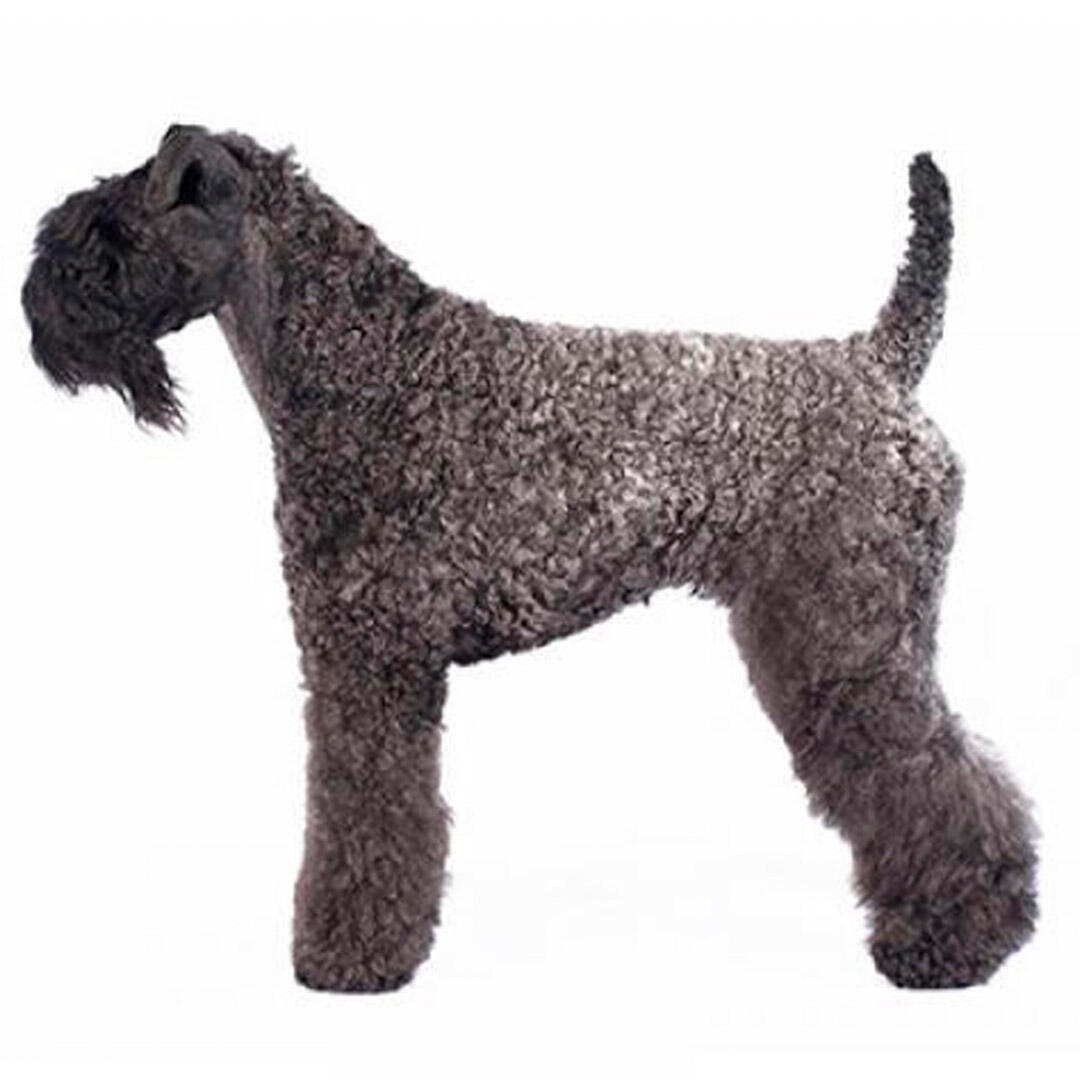
| Family-friendly: | 4/5 |
| Exercise needs: | 5/5 |
| Easy to train: | 4/5 |
| Tolerates being alone: | 3/5 |
| Likes other pets: | 2/5 |
| Energy level: | 4/5 |
| Grooming needs: | 2/5 |
| Shedding: | 1/5 |
The Kerry Blue Terrier is generally a hardy breed with no widely recognised breed specific health problems.
Priority Kennel Club health schemes and testing:
None but there are several recommended schemes that the Kennel Club recommends which can be found here.
Described as fierce, intelligent, charming and trust-worthy, the Kerry Blue is still a formidable character even though they are more popular as a show dog than working dog today. Bred to deal with vermin and guard property, the Kerry Blue is an independent thinker, and if left untrained may make decisions by themselves that lead owners into trouble!
| Family-friendly: | 4/5 |
| Exercise needs: | 5/5 |
| Easy to train: | 4/5 |
| Tolerates being alone: | 3/5 |
| Likes other pets: | 2/5 |
| Energy level: | 4/5 |
| Grooming needs: | 2/5 |
| Shedding: | 1/5 |
Originating from County Kerry in the south-west of Ireland, the Kerry Blue is the National Dog of Ireland. A versatile, hard-working farm dog, the Kerry Blue was and is, excellent as a guard/watch dog, and was originally bred to kill rats and even take to the water after otters.
Their origins are slightly hazy and may originally have been a cross between existing Irish Terriers and Bedlington Terriers but this is uncertain enough that romantic legends still talk of the Kerry Blue’s ancestor swimming ashore from a shipwreck.
Recognised by the Irish Kennel Club in 1922, a breed club was formed in the UK that same year and the breed standard formalised - although while they found a niche in the terrier world they have for some reason never been hugely popular.
This chunky, solid and sparky terrier requires an experienced terrier owner who can provide consistent kind training and a calm nature to balance out the spice of the Kerry Blue. They are not for the faint-hearted, nor for those with very small children (or children who can’t follow instruction and respect a dog’s space),as the terrier nature is very strong. Ideal owners will match the Kerry Blue’s quick nature, and provide suitable outlets for their natural desires.
An hour a day of dog exercise, walking and free running is the bare minimum, ideally much more, particularly training that engages the Kerry Blue’s exceptional brain. Any activity that can recreate hunting and catching rats will be a hit, as will scent based work such as tracking, scent discrimination and man-trailing.
The Kerry Blue will fit into any sized home, but does need a garden with secure fencing, they are agile and determined in pursuit of quarry and will jump over, dig under or squeeze through inferior fencing!
As a guarding and vocal terrier, the Kerry Blue is better suited to a quieter home or more rural environment, the constant stimulation in a busy, city or town household may well result in a very loud, stressed dog who cannot relax.
The Kerry Blue Terrier needs to have a balanced diet including all the main nutrient groups and a constant supply of fresh water. It's also important to conduct regular body condition scores to ensure you keep your dog in ideal shape and remember to feed your pet at least twice daily and in accordance with the feeding guidelines of their particular food.
The soft, silky, wavy coat does not shed and needs daily brushing and a clip every six to eight weeks. Check over the coat and pay particular attention to paws and ears as the soft coat can collect debris. Find out more about dog grooming and daily care with our article.
Early socialisation to other dogs, children and livestock is essential but even then, they are unlikely to mix well with cats - and may even consider resident cats as prey outside the comfort of the house or if their predatory instincts are aroused.
A well socialised and habituated Kerry Blue is easily capable of many canine sports and activities, but they are not a dog to ignore a challenge or perceived threat and owners should always remain aware of their game, feisty nature. When it comes to dog training, they respond well to positive reinforcement and are quick learners once they believe that what you want from them was their idea in the first place!
Due to their independent nature and strong desire to hunt, the Kerry Blue is better suited to families without children or with older teenagers. The Kerry Blue Terrier is unlikely to tolerate the wobbliness of toddlers or the noise of babies well and this will result in a stressed dog who is unhappy and difficult to manage. Older teenagers who have an interest in dog training may enjoy the challenge of getting the Kerry Blue ‘on-side’.
While many dogs are traditionally thought of as being good with children, all dogs and children need to be taught to get on with each other and be safe together. Even so, dogs and young children should never be left alone together and adults should supervise all interactions between them.